Since 1991, America’s #1 Rack Specialty StoreAmerica's #1 Rack Store
Expert Phone SupportPrice Guarantee
How to Decide what Style of Bike Rack is Right for You
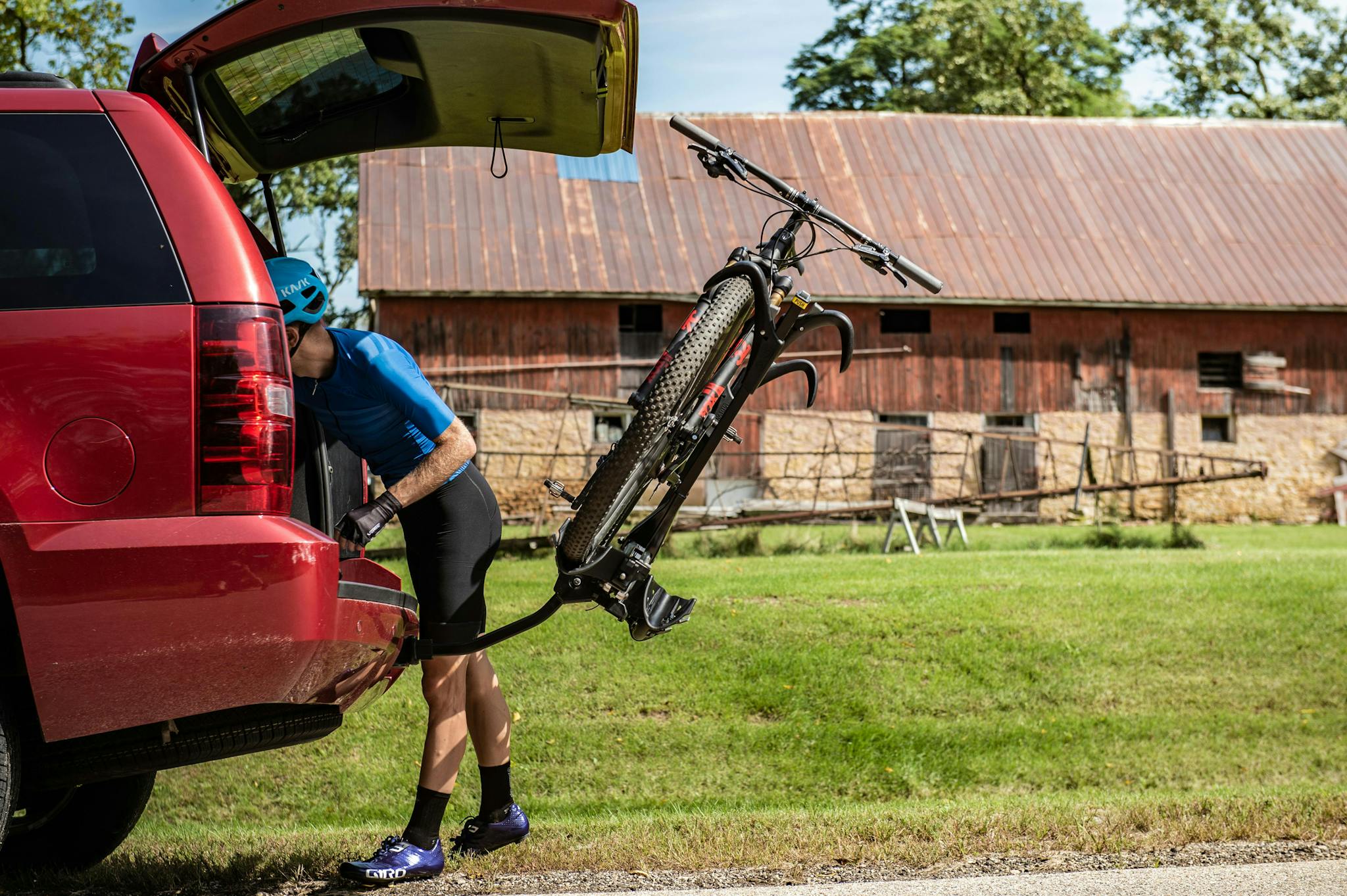
Too Many Options to Choose From
With so many styles of bike racks on the market consumers are often left wondering which rack will best suit their needs, or if the rack is even compatible with their vehicle or their bikes. In this guide we will hopefully help clear some of the smoke to make the decision a little clearer. Lets begin with the 3 main locations a bike rack can be installed on a vehicle. The roof, trunk/hatch, or hitch receiver. Each location has their own pros and cons, and we will dive into that in detail here.
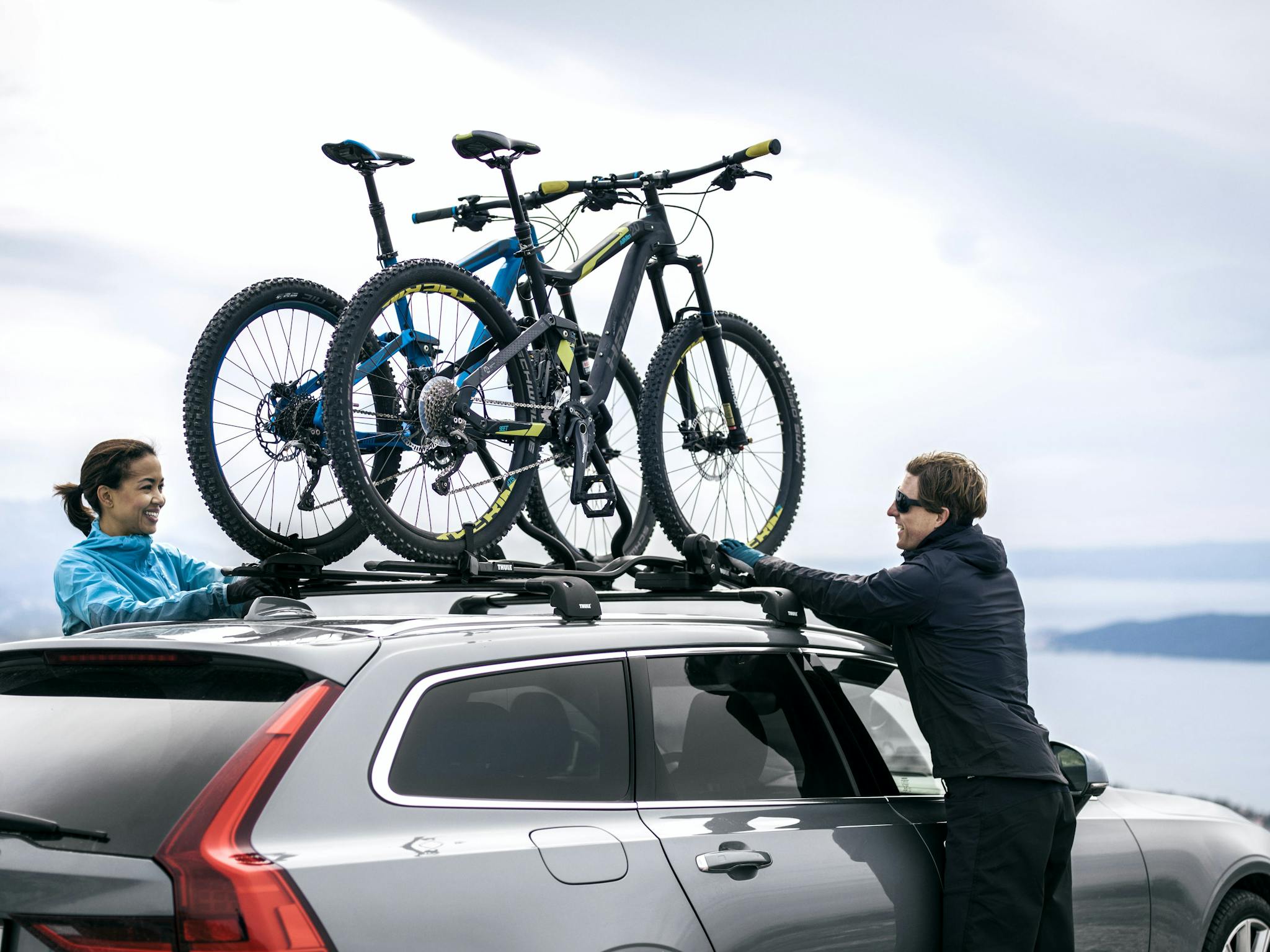
Roof Mounted Bike Racks
Starting with the roof, almost all rooftop bike racks attach to crossbars mounted to your vehicle's roof in some way, shape or form. This means if you don’t have crossbars already that will be an additional cost to just the bike attachments. Rooftop bike carriers can be a great way to transport bikes on small/mid-size vehicles by getting the bikes on your roof and out of the way of areas you may want to access on a regular basis such as the doors or hatch area. They also keep your bikes free of potential damage in the event someone rear-ends your vehicle during transport. While there are many avid rooftop bike transport enthusiasts out there (myself included), I must admit that the trunk or hatch mounted solutions will be better suited for the majority. This mainly comes down to vehicle height. I myself, am a 5’11” tall guy with a compact car, have no trouble lifting my mountain bikes onto my rooftop bike rack setup. However most people do not drive a compact car these days, the majority of the vehicles on the road are SUVs in 2023. Lifting a light road/gravel bike or XC Race Bike onto an SUV is certainly do-able, but most people would agree that lifting your Enduro mountain bike onto a vehicle like a 4 Runner and trying to balance it while you secure it in the rack is not ideal for most. That said, rooftop bike racks are well alive and great for some of us cyclists out there. I would just recommend trying to lift your bikes up to your roof before going any further into pursuing a rooftop bike rack.
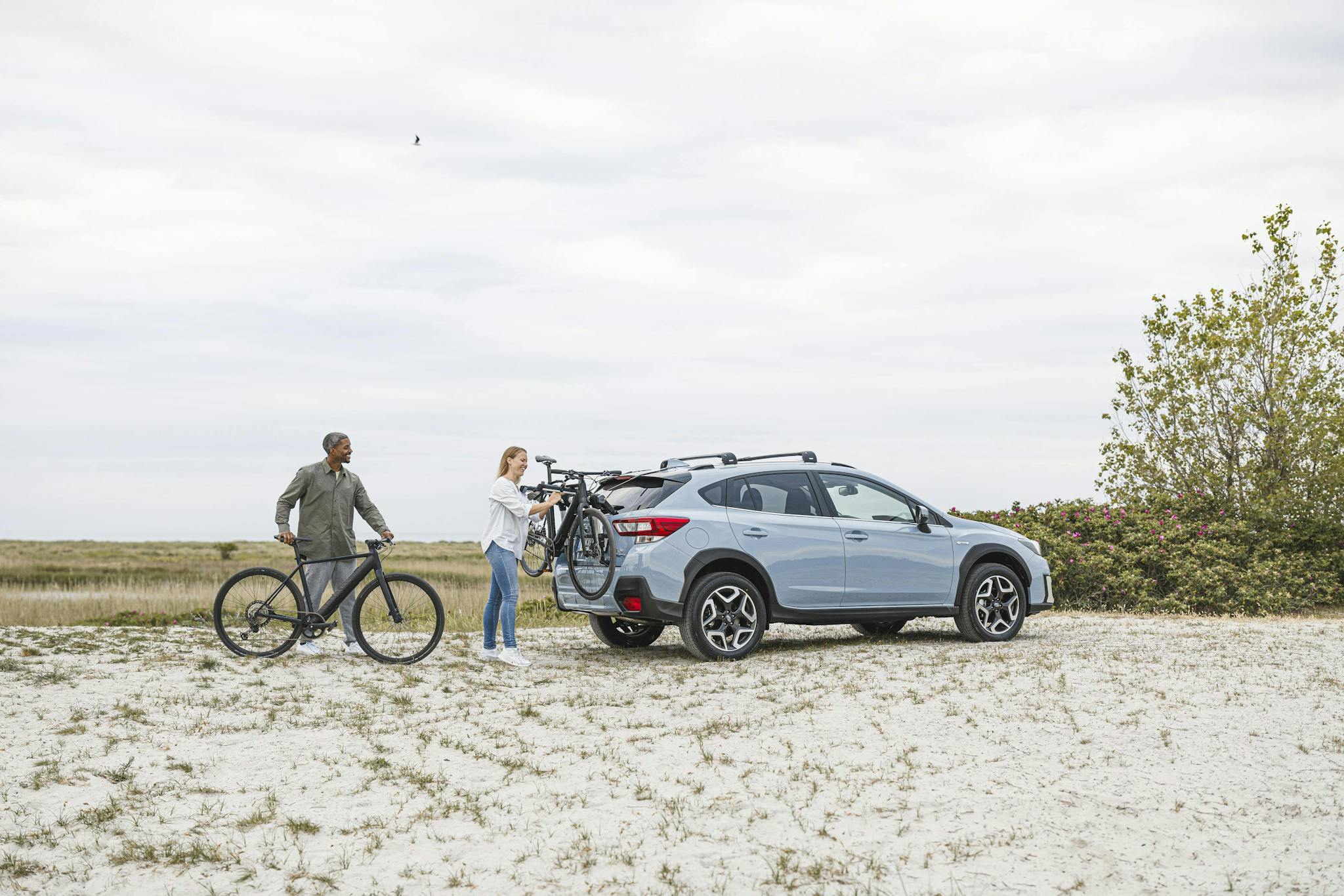
Trunk Mounted Bike Racks
Moving into Trunk Mounted Bike Racks, this style of rack is going to have the lowest barrier to entry as far as cost goes to get a well-designed rack from a reputable brand. Trunk mounted bike racks have a long history in cycling and have always been a great option for folks who maybe don’t ride super often or don’t want to purchase an expensive system that may cost more than the bikes they are riding in some circumstances. They often fit most sedans, hatchbacks, and some SUVs making them easy to carry over as you change vehicles. Most trunk mounted racks carry two or three bikes at the most, if you find one that carries more I would steer clear. This brings me to the downsides of these racks. While reliable for carrying everyday bikes on a family trip, if you have heavier mountain bikes or maybe an E-Bike you will definitely want to consider another option. These racks are often making contact with painted surfaces on your vehicle, and with significant weight from bikes they can create marks in your paint or worse if the per bike weight rating is exceeded. They also all pretty much make accessing your trunk or hatch impossible as the rack has to be removed to do so, which means the bikes have to be removed. These downsides shouldn’t scare you away from this style of rack, what I would like you to take away from them instead is to respect this style of bike rack for what they are. They’re not fancy, robust bike racks designed to carry E-Bikes. They’re an affordable option designed to keep the barrier to entry low for people to transport their bikes. That way more people can get out and enjoy the sport of cycling. Because let's face it, not much else in this sport is cheap.
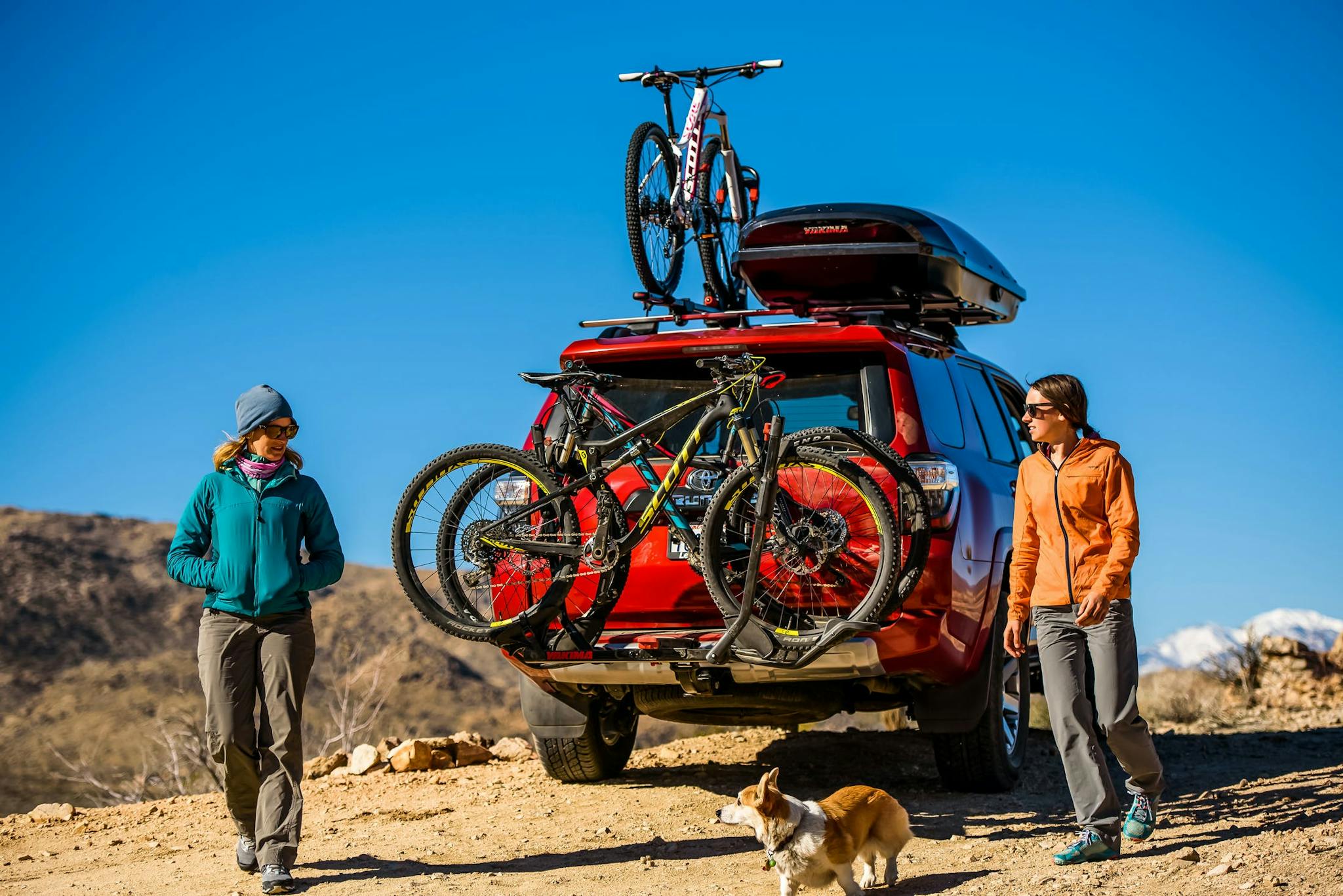
Hitch Mounted Bike Racks
Last, but certainly not least we will hop into Hitch Mounted Racks. These bike racks are mounted into either a 1.25” or 2” trailer hitch receiver that you would often associate from towing. Some vehicles come with hitch receivers installed from the manufacturer, others need to be installed aftermarket. However your hitch receiver ended up on your car it is a great method to transport bikes. There are two main styles of hitch mounted bike racks. Hanging style, where the bikes hang as the name suggests from the toptube of the bicycle frame, and platform style which either secures the bike by the tire or the frame in the case of some racks. These racks are without a doubt the way most cyclists are opting to transport their bikes in 2023. The attachment point is much more secure compared to a trunk mounted rack, but the loading height is quite low in comparison to rooftop bike racks. Hanging style hitch racks are great for loading up the whole family, some racks of this style can accommodate 5 bikes. Platform bike racks are often lower capacity, meaning they are mostly sold to transport one or two bikes. However they are the most stable of the two hitch mounted styles, and work best for larger, heavier bikes such as mountain bikes or E-Bikes. I should add that these platform racks do sometimes offer an additional two bike add-on, however it is an additional purchase. There aren't too many downsides to hitch mounted bike racks to name, but I will cover a few that immediately come to mind. There will still be some obstruction of the rear cargo area if frequent access is necessary, although it is much less intrusive compared to trunk mounted racks. The hitch mounted bikes may be tilted or swung out of the way for easier access often with the bikes loaded. Another con I bet most people can think off right off the bat is not having a hitch receiver already installed on your vehicle. This can already make the already not so cheap hitch mounted bike racks a bit more of a costly endeavor. We’ve heard in our area the hitch with labor installed onto an average vehicle was between $300-$400. If you are handy this can be quite a bit less expensive as most hitches just bolt on behind the rear bumper of the vehicle on the crash support, but not everyone can or will want to tackle that work. One final con to note is that like the trunk mounted racks, your bikes are behind your vehicle…so if you worry about some jerk rear-ending your bikes this unfortunately will not put those fears to rest.
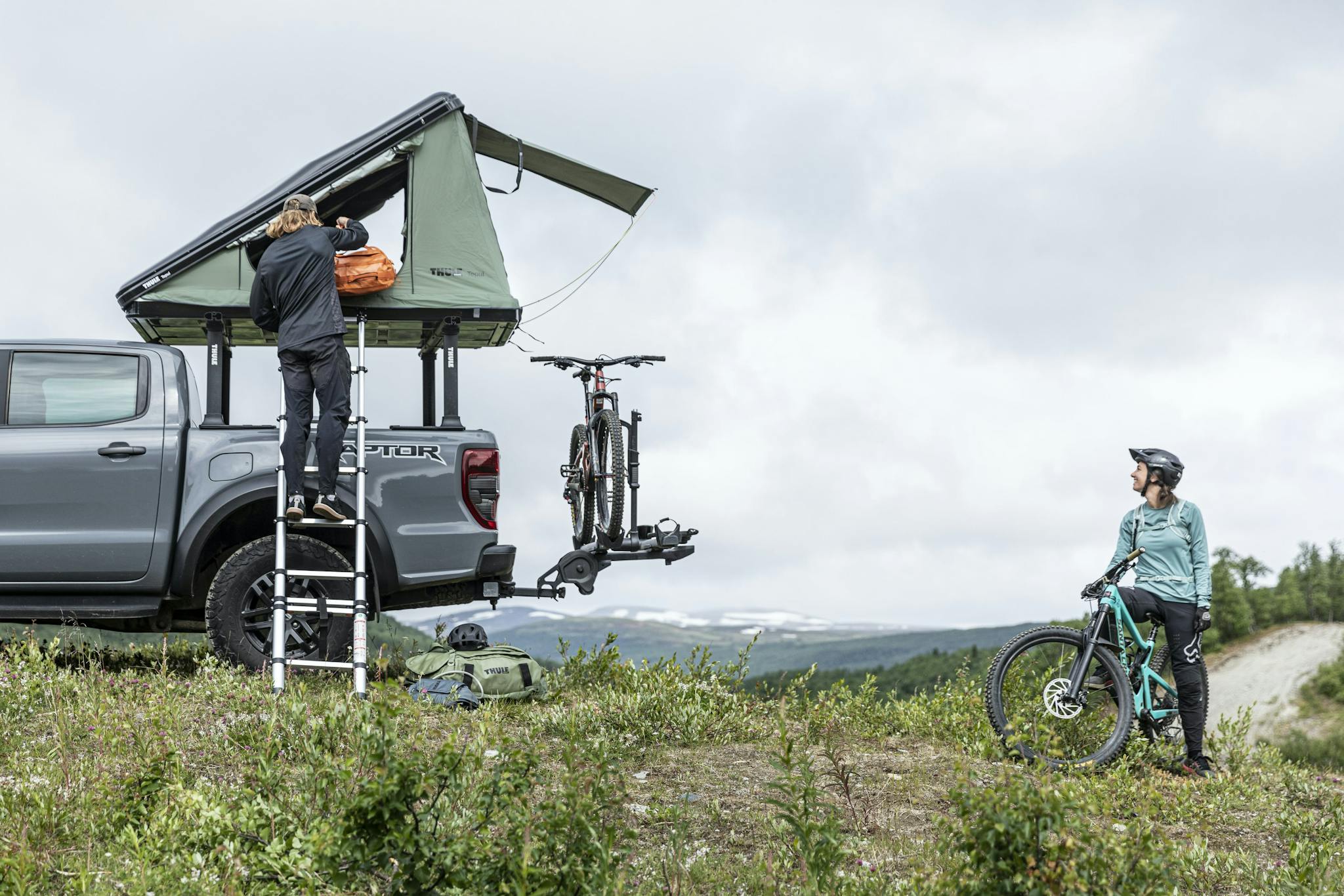
Still on the Fence? Let us Help with the Rest!
I hope this article has shed some light on the differences between the three common styles of bike racks on the market, and maybe helped you make a more informed decision on what style to purchase. Of course, if you're still on the fence feel free to reach out to one of our Rack Experts so that we can guide you the rest of the way to that sweet new rack so that you can spend less time shopping for one, and more time riding!
America’s #1 Automotive Rack Store
info@rackwarehouse.com
1-800-272-5362